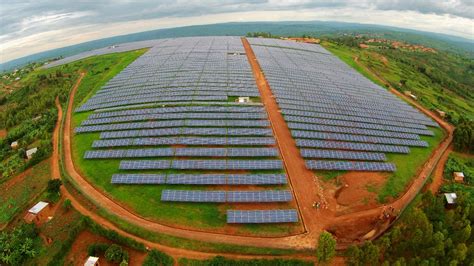Power interconnectors play a crucial role in bridging energy gaps across African borders, ensuring a more secure and cost-effective energy landscape. Let’s delve deeper into the world of interconnected power pools and the impact they have on shaping the continent’s energy future.
Africa’s Most Interconnected Power Pool
At the forefront of this energy revolution is the Southern African Power Pool (SAPP), touted as the most interconnected power pool in Africa. Despite its advancements, there are still areas that require attention and development.
Chikoma Kazunga, Africa GreenCo’s Head of Business Development & New Ventures, highlighted during a recent conference the significance of enhancing interconnections within SAPP. He emphasized that while countries like South Africa, Botswana, Zimbabwe, and Zambia enjoy relatively robust interconnections, others such as Angola, Malawi, and Tanzania remain isolated from this network.
The Missing Links
Tanzania emerges as a pivotal player connecting East and Southern Africa power pools. However, gaps in interconnection capacities persist between various regions. For instance:
– Zambia to Namibia with 180MW capacity
– Zambia to DRC with 220MW capacity
– Mozambique to Zimbabwe with limited capacity
The need for stronger interconnectors is clear to maximize energy trading potential and bolster regional economies.
Empowering Economic Growth through Interconnectors
In West Africa, efforts are underway to establish the West African Power Pool (WAPP). Despite challenges such as weak grids and financial constraints hindering progress, stakeholders like Souraki Sima stress the importance of seamless integration for fostering economic development.
By enabling energy trade among neighboring countries in West Africa, an integrated transmission network could alleviate power shortages and attract investments critical for sustainable growth.
Climate Change Impact on Energy Infrastructure
As climate change escalates disruptions like El Nino affecting rainfall patterns across regions,
Kazunga pointed out instances where surplus hydroelectric power in Tanzania couldn’t be utilized due to lacking interconnections with neighboring countries facing shortages.
Enhanced connectivity could mitigate such imbalances by facilitating cross-border power sharing during crises or surplus situations.
Paving the Way for Future Projects
Exciting developments loom on the horizon with new transmission projects set to transform regional energy landscapes.
Privately financed initiatives like an interconnector from Zambia to DRC’s mining hub signal a shift towards more tailored solutions meeting specific demands.
Projects linking Malawi to Mozambique promise broader access within SAPP while laying foundations for further integration between Southern and Eastern African power pools.
Embracing these advancements underscores a collective effort towards establishing a more resilient, interconnected energy ecosystem that powers progress throughout the continent. Join hands in shaping Africa’s electrifying future!

